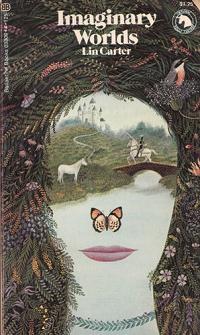
Fantasy comedy or comic fantasy is a subgenre of fantasy that is primarily humorous in intent and tone. Typically set in imaginary worlds, fantasy comedy often involves puns on and parodies of other works of fantasy.

Edward John Moreton Drax Plunkett, 18th Baron of Dunsany was an Anglo-Irish writer and dramatist, published mostly as Lord Dunsany. Over 90 of his books, mainly fantasy, appeared in his lifetime; his original work and compilations have continued to appear. They include several hundred short stories, and many plays, novels, and essays. He gained fame with his early stories and plays and was seen in the 1910s as a great writer of the English-speaking world. He is best known today for a 1924 fantasy novel, The King of Elfland's Daughter, and for The Gods of Pegāna, where he devised a fictional pantheon and laid the grounds for the fantasy genre. Born in London to the second-oldest title in the Irish peerage, he was raised there and in Kent, then lived much of his life at what may be Ireland's longest inhabited house, Dunsany Castle near Tara, though he retired to Shoreham, Kent. He worked with W. B. Yeats and Lady Gregory, gained an honorary doctorate from Trinity College, Dublin, was a chess and pistol-shooting champion of Ireland, and travelled and hunted. He also invented an asymmetrical version of chess called Dunsany's chess. He died in Dublin of appendicitis.

Sword and sorcery (S&S) is a subgenre of fantasy characterized by sword-wielding heroes engaged in exciting and violent adventures. Elements of romance, magic, and the supernatural are also often present. Unlike works of high fantasy, the tales, though dramatic, focus on personal battles rather than world-endangering matters. Sword and sorcery commonly overlaps with heroic fantasy.

Eric Rücker Eddison, CB, CMG was an English civil servant and author, writing epic fantasy novels under the name E. R. Eddison. His notable works include The Worm Ouroboros (1922) and the Zimiamvian Trilogy (1935–1958).

Linwood Vrooman Carter was an American author of science fiction and fantasy, as well as an editor, poet and critic. He usually wrote as Lin Carter; known pseudonyms include H. P. Lowcraft and Grail Undwin. He is best known for his work in the 1970s as editor of the Ballantine Adult Fantasy series, which introduced readers to many overlooked classics of the fantasy genre.

Fantasy literature is literature set in an imaginary universe, often but not always without any locations, events, or people from the real world. Magic, the supernatural and magical creatures are common in many of these imaginary worlds. Fantasy literature may be directed at both children and adults.
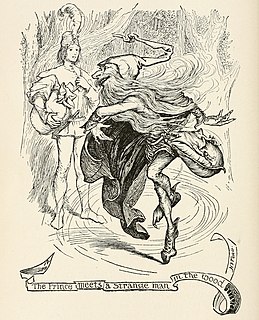
Elements of the supernatural and the fantastic were an element of literature from its beginning. The modern genre is distinguished from tales and folklore which contain fantastic elements, first by the acknowledged fictitious nature of the work, and second by the naming of an author. Works in which the marvels were not necessarily believed, or only half-believed, such as the European romances of chivalry and the tales of the Arabian Nights, slowly evolved into works with such traits. Authors like George MacDonald created the first explicitly fantastic works.

The Ballantine Adult Fantasy series was an imprint of American publisher Ballantine Books. Launched in 1969, the series reissued a number of works of fantasy literature which were out of print or dispersed in back issues of pulp magazines, in cheap paperback form—including works by authors such as James Branch Cabell, Lord Dunsany, Ernest Bramah, Hope Mirrlees, and William Morris. The series lasted until 1974.
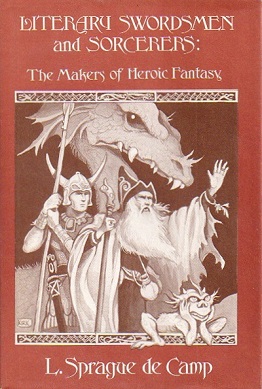
Literary Swordsmen and Sorcerers: The Makers of Heroic Fantasy is a work of collective biography on the formative authors of the heroic fantasy genre by L. Sprague de Camp (1907-2000), first published in 1976 by Arkham House in an edition of 5,431 copies. Nine chapters (2-10) are revisions from a series of ten articles, also titled "Literary Swordsmen and Sorcerers," that initially appeared in the magazine Fantastic and the fanzine Amra between 1971 and 1976. A French edition was issued in May 2010 under the title Les pionniers de la fantasy, and an ebook edition was issued in June 2014 by Gateway/Orion.
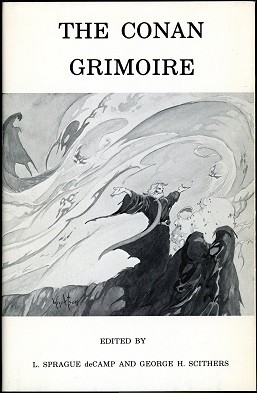
The Conan Grimoire is a 1972 collection of essays, poetry and fiction edited by L. Sprague de Camp and George H. Scithers, published in hardcover by Mirage Press. The essays were originally published as articles in Scithers' fanzine Amra. The book is a companion to Mirage’s previous two volumes of material from Amra, The Conan Reader (1968) and The Conan Swordbook (1969). Most of the material in the three volumes, together with some additional material, was later reprinted in two de Camp-edited paperback anthologies from Ace Books; The Blade of Conan (1979) and The Spell of Conan (1980).
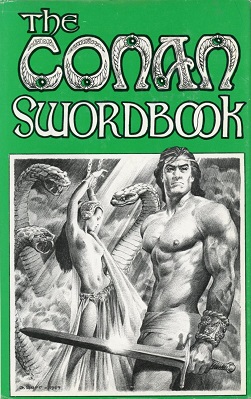
The Conan Swordbook is a 1969 collection of essays edited by L. Sprague de Camp and George H. Scithers, published in hardcover by Mirage Press. The essays were originally published as articles in Scithers' fanzine Amra. The book is a companion to Mirage’s other two volumes of material from Amra, The Conan Reader (1968) and The Conan Grimoire (1972). Most of the material in the three volumes, together with some additional material, was later reprinted in two de Camp-edited paperback anthologies from Ace Books; The Blade of Conan (1979) and The Spell of Conan (1980).
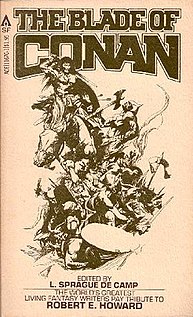
The Blade of Conan is a 1979 collection of essays edited by L. Sprague de Camp, published in paperback by Ace Books. The material was originally published as articles in George H. Scithers' fanzine Amra. The book is a companion to Ace’s later volume of material from Amra, The Spell of Conan (1980). Most of the material in the two volumes, together with some additional material, was reprinted from three previous books issued in hardcover by Mirage Press; de Camp’s collection The Conan Reader (1968), and the de Camp and Scithers-edited anthologies The Conan Swordbook (1969). and The Conan Grimoire (1972).

The Spell of Conan is a 1980 collection of essays, poems and fiction edited by L. Sprague de Camp, published in paperback by Ace Books. The material was originally published as articles in George H. Scithers' fanzine Amra. The book is a companion to Ace's earlier volume of material from Amra, The Blade of Conan (1979). Most of the material in the two volumes, together with some additional material, was reprinted from three previous books issued in hardcover by Mirage Press; de Camp's collection The Conan Reader (1968), and the de Camp and Scithers-edited anthologies The Conan Swordbook (1969). and The Conan Grimoire (1972).
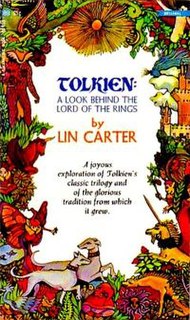
Tolkien: A Look Behind "The Lord of the Rings" is a study of the works of J. R. R. Tolkien written by Lin Carter. It was first published in paperback by Ballantine Books in March 1969 and reprinted in April 1969, April 1970, July 1971, July 1972, February 1973, July 1973, June 1975 and November 1977, after which it went out of print for over twenty-five years. The book has been translated into French, Japanese and Polish. A new edition updated by Adam Roberts was published by Gollancz in August 2003; it constituted both the first British edition and first hardcover edition. The first American hardcover edition was published by Tor Books in 2004.

The Young Magicians is an American anthology of fantasy short stories, edited by American writer Lin Carter. It was first published in paperback by Ballantine Books in October 1969 as the seventh volume of its Ballantine Adult Fantasy series. It was the second such anthology assembled by Carter for the series, issued simultaneously with the first, Dragons, Elves, and Heroes. The book has been translated into German.
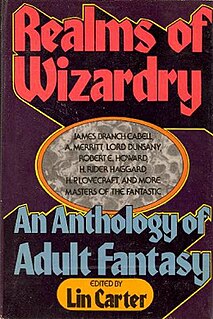
Realms of Wizardry: An Anthology of Adult Fantasy is an American anthology of fantasy stories, edited by American writer Lin Carter. It was first published in hardcover by Doubleday in December 1976 as the second of two such anthologies continuing a series of nine assembled by Carter for the Ballantine Adult Fantasy series.

The Sundering Flood is a fantasy novel by British writer William Morris, perhaps the first modern fantasy writer to unite an imaginary world with the element of the supernatural, and thus the precursor of much of present-day fantasy literature. The Sundering Flood was Morris' last work of fiction, completed only in rough draft, with the ending dictated from his deathbed. It was edited posthumously by his daughter May into finished form for publication and published in 1897.

A Tale of the House of the Wolfings and All the Kindreds of the Mark is a fantasy novel by William Morris, perhaps the first modern fantasy writer to unite an imaginary world with the element of the supernatural, and thus the precursor of much of present-day fantasy literature. It was first published in hardcover by Reeves and Turner in 1889.
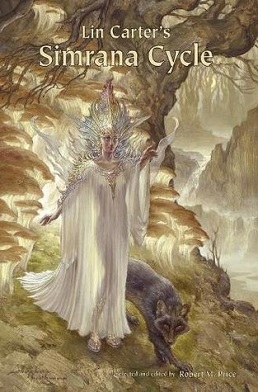
Lin Carter's Simrana Cycle is a collection of fantasy short stories by American writer Linwood V. Carter, selected and edited by Robert M. Price. It was first published in hardcover, trade paperback and ebook by Celaeno Press in February 2018.
